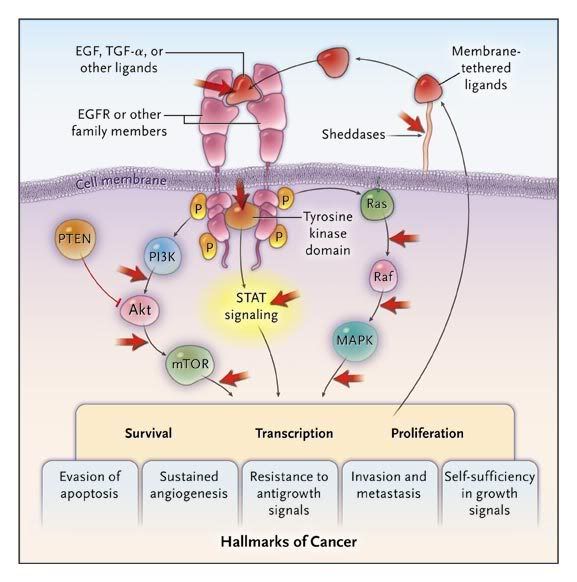NEJM Volume 361:1018-1020 Personalized Medicine and Inhibition of EGFR Signaling in Lung Cancer

The family of surface-receptor tyrosine kinases encoded by EGFR consists of four members that form homodimers or heterodimers after ligand binding. Dimerization results in the activation of tyrosine kinases, which is followed by stimulation of three major signaling pathways, eventually leading to the activation of five of the six hallmarks of cancer (with the exception of limitless replication). The classic mutations of the EGFR kinase domain result in ligand-independent activation of the pathway. Tyrosine kinase inhibitors, such as erlotinib and gefitinib, interfere with the kinase activity of the gene and prevent downstream signaling. Activation ofEGFR signaling also leads to an autocrine loop resulting from the formation and release of ligands. The ligands require release from their membrane-bound precursor forms by the activity of sheddase proteins. Only nodal points in the pathway are displayed, indicating targets of therapies in current clinical use or in trials (red arrows). Akt denotes protein kinase B, PI3K phosphatidylinositol 3-kinase, PTEN phosphatase and tensin homologue, MAPK mitogen-activated protein kinase, mTOR mammalian target of rapamycin, P phosphorylation, STAT signal transducer and activator of transcription, and TGF- transforming growth factor
transforming growth factor  .
.





 留言列表
留言列表
 線上藥物查詢
線上藥物查詢 